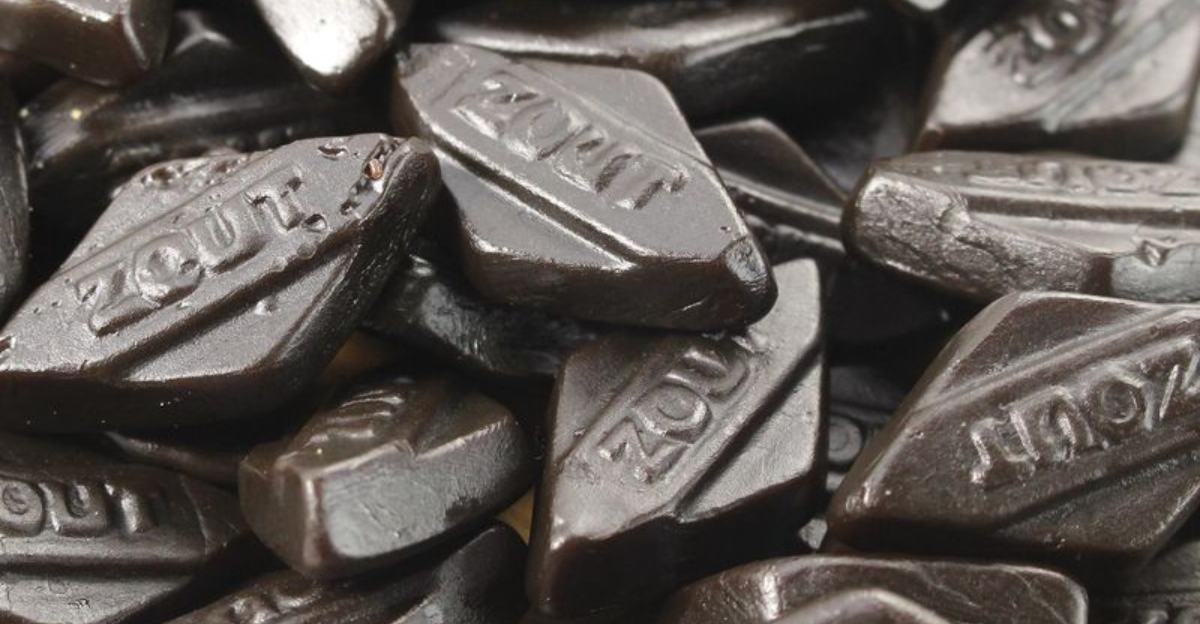14 Awful Candies That Some People Still Enjoy (Truly Not Sure Why)

Some candies deserve a permanent spot in the sugar-coated hall of shame. Despite their questionable taste, strange textures, or downright bizarre concepts, these sweet offenders continue to find their way into shopping carts and trick-or-treat bags year after year.
Let’s unwrap the mystery of why these 14 confectionery catastrophes somehow maintain their place on store shelves despite making taste buds everywhere cry for mercy.
1. Circus Peanuts: The Styrofoam Imposters
Orange, banana-flavored, peanut-shaped marshmallows that somehow taste like neither banana nor peanuts. The texture resembles stale packing material that’s been left in a humid basement for decades.
I once brought these to a family picnic, thinking they were a classic treat. My cousin bit into one and asked if this was some kind of practical joke.
Their bizarre staying power in the candy market remains one of life’s great unsolved mysteries.
2. Necco Wafers: Chalk Discs in Disguise
Dating back to 1847, these powdery discs have the consistency of antacid tablets and flavors that hint vaguely at fruit while delivering mostly disappointment. The pale pastel colors falsely promise tastiness.
What’s truly baffling is how they’ve survived for over 170 years. Perhaps they’re secretly being stockpiled for sidewalk chalk emergencies rather than actual consumption.
Yet somehow, they continue to sell enough to justify production.
3. Black Licorice: The Candy That’s Actually Medicine
Black licorice doesn’t just taste like medicine – it literally contains compounds used in actual medications. The flavor is so polarizing that haters describe it as tasting like anise-flavored plastic with notes of industrial cleaning solution.
My grandmother used to keep these in her purse and pop them like breath mints. She’d offer me one every time we met, genuinely confused by my horrified expression.
To this day, the smell triggers flashbacks of politely choking them down to avoid hurting her feelings.
4. Good & Plenty: Licorice in Disguise
The pink and white candy coating of Good & Plenty performs the ultimate betrayal – luring you in with its innocent appearance before ambushing your taste buds with black licorice. The contrast between expectation and reality is jarring.
When I was eight, I grabbed a handful at a movie theater, thinking they were some kind of sweet tart. The traumatic licorice surprise that followed taught me an important life lesson: trust issues can begin with candy. Some wounds never fully heal.
5. Candy Corn: Waxy Triangle Terrors
These Halloween staples taste like someone tried to make sugar taste bad on purpose. The waxy texture combined with overwhelming sweetness creates an unholy alliance of awful mouth-feel and flavor disappointment.
Approximately 35 million pounds of candy corn are produced annually. That’s 9 billion individual kernels – enough for every person on Earth to experience regret at least once.
Yet despite near-universal mockery, they return every October like seasonal torture devices.
6. Bit-O-Honey: The Dental Work Destroyer
Forget the gentle sweetness its name suggests – Bit-O-Honey is more like Bit-O-Tooth-Extraction. These honey-flavored taffy squares have the tensile strength of industrial adhesive and a remarkable ability to find every dental filling you own.
The flavor isn’t terrible, but the workout required to consume one piece makes you question if candy should require this much commitment. By the time you’ve finished chewing, you’ve burned more calories than the candy contains.
7. Peeps: Sugary Styrofoam Birds
These marshmallow creatures are essentially sugar-crusted sugar filled with more sugar. The texture resembles what might happen if styrofoam developed sentience and decided to become even less appealing.
Scientists have discovered that Peeps are nearly indestructible. They survive microwaves, liquid nitrogen, and apparently decades on store shelves.
My brother once left one on our porch for an entire summer – even ants refused to eat it.
8. Thrills Gum: Soap-Flavored Chewing Experience
Canadian candy company Thrills actually advertises their gum with the slogan “It still tastes like soap!” This purple gum genuinely tastes like you’ve been punished for swearing – a lavender-floral flavor reminiscent of grandma’s bathroom.
The truly perplexing part is that they’re proud of this. It’s like creating a beverage that tastes like gasoline and considering it a selling point.
Yet somehow, enough people buy this nostalgic mouth-cleaning experience to keep it in production.
9. Dubble Bubble: The Three-Second Wonder
The original pink disappointment brick provides approximately three seconds of flavor before transforming into flavorless rubber. What follows is a jaw-aching chewing marathon with all the appeal of gnawing on a pencil eraser.
The comics inside the wrapper are often more entertaining than the gum itself. Children worldwide have been bamboozled by its bright pink color and initial sugar rush, only to spend the next 20 minutes wondering why they’re still chewing this tasteless wad.
10. Jujubes: Dental Cement Disguised as Candy
These colorful little pellets have the unique distinction of being simultaneously too hard and too sticky. Biting into one feels like testing dental work against industrial-grade adhesive.
The fruit flavors are vague suggestions rather than actual taste experiences. Back in fourth grade, I nearly lost a baby tooth to a particularly stubborn red one.
The tooth was already loose, but the Jujube seemed determined to speed up the process.
11. Mary Janes: Peanut Butter’s Evil Twin
Wrapped in iconic yellow and red packaging, Mary Janes combine molasses and peanut butter into a jaw-breaking chew that somehow manages to insult both ingredients. The flavor profile can best be described as “sweetened industrial adhesive with notes of stale nuts.”
These candies have been disappointing trick-or-treaters since 1914. Their remarkable longevity in the candy market suggests either a powerful nostalgia factor or evidence that some people genuinely enjoy the sensation of their fillings being challenged.
12. Salted Licorice: Scandinavian Taste Punishment
Popular in Nordic countries, salted licorice takes regular licorice and makes it worse by adding ammonium chloride – yes, a cleaning agent. The result tastes like someone combined black licorice with road salt and industrial cleaner.
My Swedish friend once offered me some as a “delicacy.” After one bite, I was convinced it was actually some kind of elaborate Nordic practical joke. The burning sensation followed by numbing is apparently the desired effect.
Stockholm syndrome applies to candy too, apparently.
13. Wax Bottles: Liquid Sugar in Edible Packaging?
Wax bottles filled with artificially colored sugar water represent peak candy confusion. You bite off the top, drink a thimbleful of sickly-sweet liquid, then… eat the wax? Discard it? The instructions were never clear.
The flavors inside these waxy vessels barely qualify as flavors at all – just vague fruit-adjacent sweetness. Children of the ’70s and ’80s somehow convinced themselves that drinking liquid from paraffin containers was the height of confectionery sophistication.
14. Horehound Drops: Colonial-Era Cough Medicine
These old-fashioned hard candies taste like someone tried to make cough syrup even more unpleasant. The bitter, medicinal flavor comes from the horehound plant, historically used to treat coughs and colds.
Somehow these survived from pioneer days into modern candy aisles. My great-uncle kept these in a tin and would offer them as treats. As a child, I genuinely believed they were some form of punishment rather than candy.
The confusion makes sense – they taste precisely like what medicine tasted like before scientists discovered children exist.
